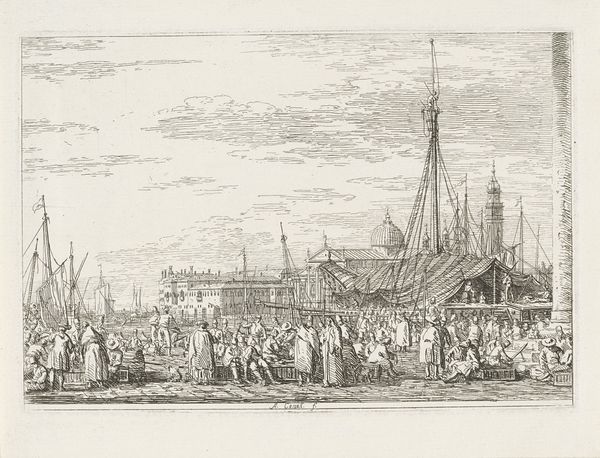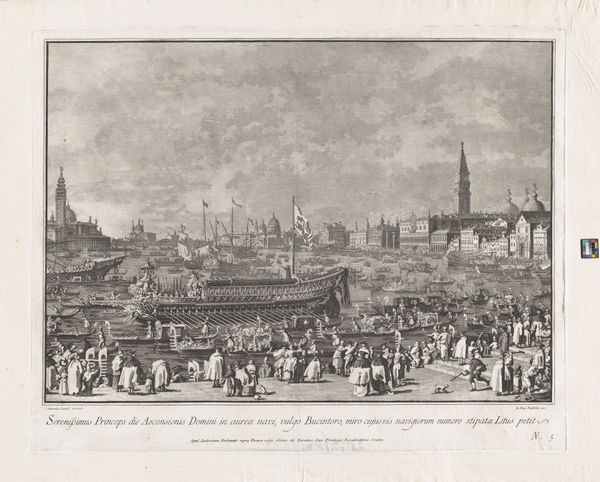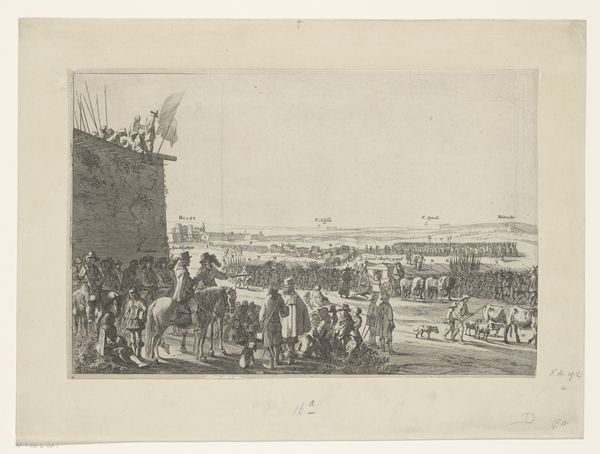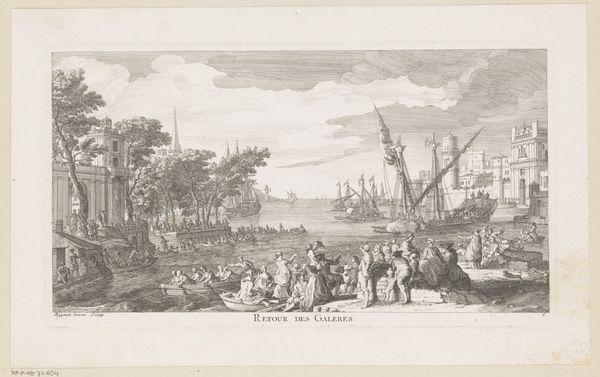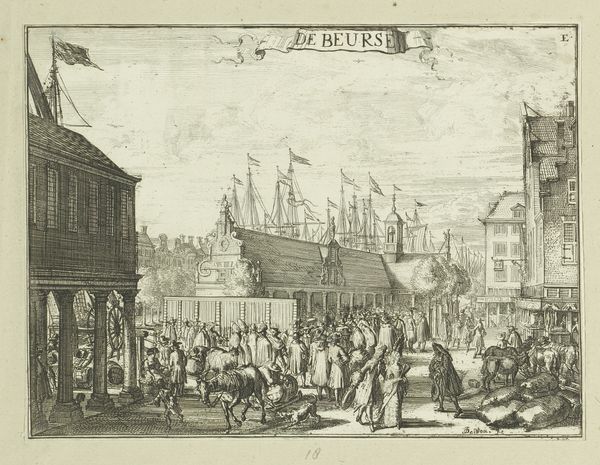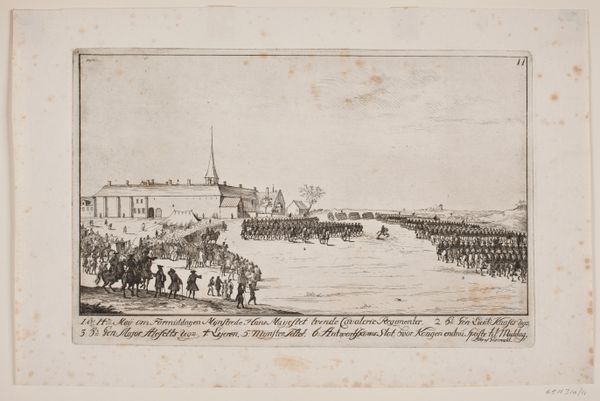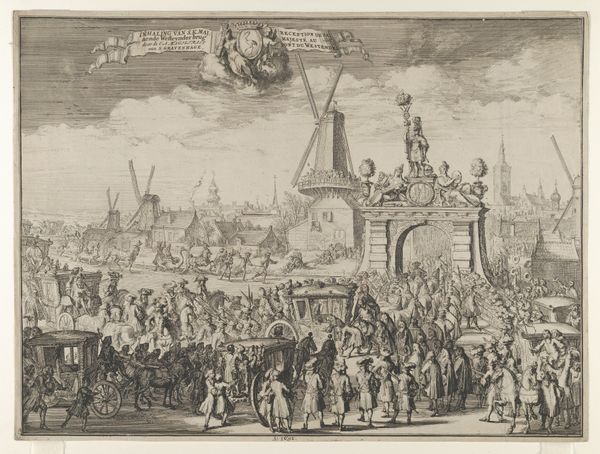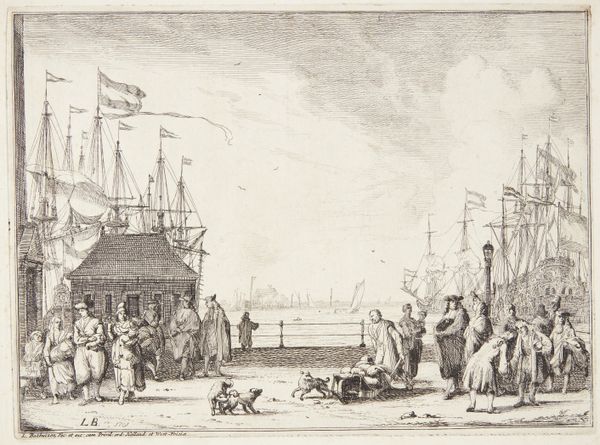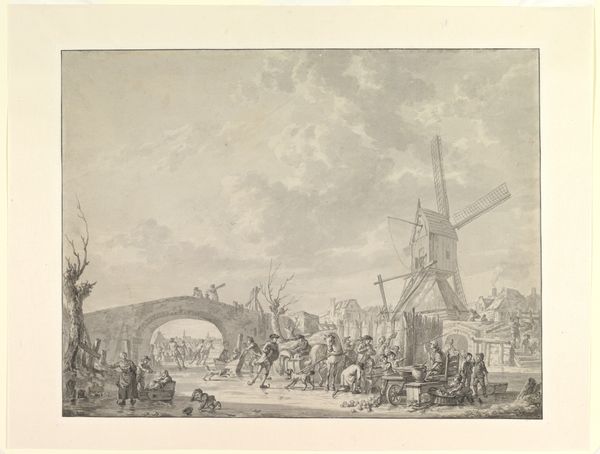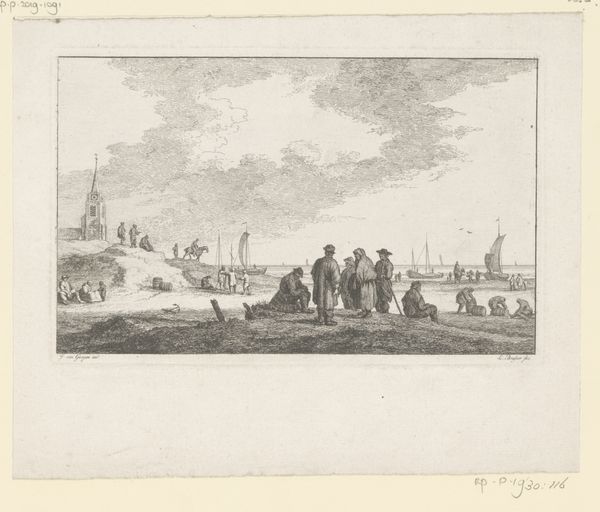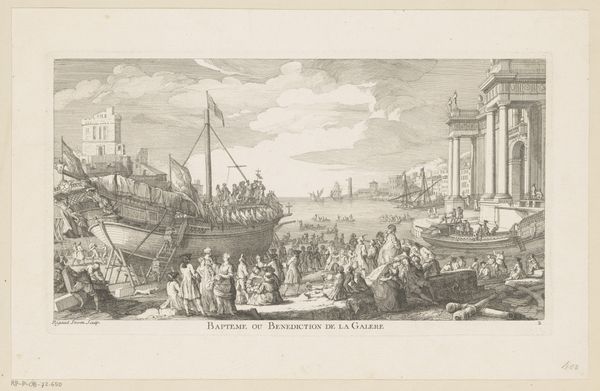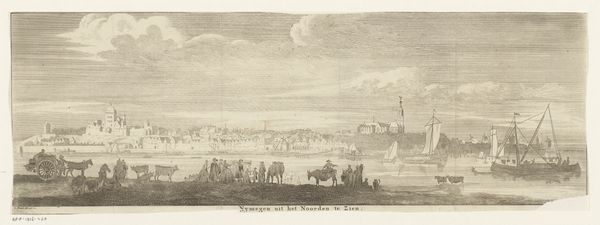
drawing, print, etching
#
drawing
#
venetian-painting
#
baroque
# print
#
etching
#
landscape
#
cityscape
Dimensions: Sheet (Trimmed): 5 11/16 × 8 3/8 in. (14.5 × 21.3 cm)
Copyright: Public Domain
Curator: So, here we have "The Market on the Molo in Venice," an etching by Canaletto, created sometime between 1735 and 1746. The print captures a bustling scene in Venice. Editor: My immediate feeling is of controlled chaos, a frenetic energy bound by very tight lines. It almost feels like looking at a photograph through a very fine screen. What do you think about the sense of visual order given that the topic of this art work is a public space with tons of people in it? Curator: I think you nailed it; the scene has been strategically composed. Even though it shows the dynamism of the everyday, there is this enduring Venetian aesthetic sensibility throughout. Notice how the verticals of the masts and the Doge's Palace contrast with the horizontal sweep of the market stalls and the water. It guides the eye in such a masterful manner! Editor: Absolutely, and those architectural structures act as visual anchors amidst all the human activity. Considering the location, could you delve deeper into what the market on the Molo signifies during this period? What kind of political or social realities is Canaletto documenting, consciously or otherwise? Curator: Venice at the time was this maritime powerhouse, of course. And this particular area, the Molo, right in front of Doge’s Palace, was, as you could imagine, at the heart of Venetian trade and governance, with an intense confluence of wealth, power, and commerce. This print acts, perhaps, as a document, both real and idealized, of Venice’s global connections. Editor: Yes, a projection of power and also its undercurrents: social inequalities, perhaps. And do you think Canaletto is attempting to capture these or other elements as symbols that are not explicit? The crowds themselves...how are we to interpret them? Curator: The faces aren't really delineated at all—there is this overwhelming sense of a single mass, of a crowd. If you were Venetian at the time, seeing all these different traders on a single square…it might suggest that, even if only at the level of commerce, society was somehow becoming more integrated and interconnected. Editor: Very interesting perspective. It suggests that there are hidden histories contained within that etching—social evolutions represented on a seemingly calm, organized visual landscape. In a way, this image feels remarkably contemporary even though it dates to the mid-18th century. Curator: Absolutely. Its success might rely precisely on capturing not just the physical Venice, but a broader sentiment of cultural identity during its global expansion. It has really been interesting to uncover and revisit these historical imprints with you. Thank you.
Comments
No comments
Be the first to comment and join the conversation on the ultimate creative platform.
